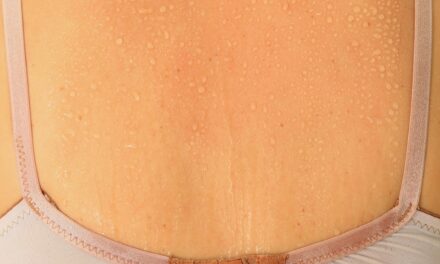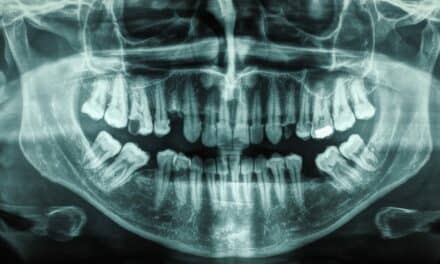People with sleep apnea are typically patients for life, just like patients with diabetes. Home sleep testing unlocks the possibility of longitudinal testing beyond the initial diagnosis.
By Sree Roy
As a physician who is triple board-certified in internal, pulmonary, and sleep medicine, Tim Kowalski, MD, CPE, FCCP, cares for many people who have chronic diseases. But he feels frustrated that sleep apnea is managed with minimal longitudinal objective data, unlike the long-term management of common chronic conditions like diabetes and hypertension.
“Typically you follow a chronic disease to make sure it’s getting better, such as reviewing downloads of continuous glucose monitoring or at-home blood pressure monitoring,” says Kowalski, who is also medical director at CleveMed. “And sleep apnea is one of the diseases in which we don’t really do that; we sort of go by symptoms: ‘Are you tired now?’ ‘Well, you were tired before.’ By contrast, we don’t assume a diabetic is fine just because they’re no longer urinating all the time.”
Kowalski thinks sleep apnea should be managed like other chronic diseases, with follow-ups that review objective efficacy. He, as well as other sleep specialists, are excited about the prospect of the new category of wearable, wireless home sleep tests (HST)—such as home sleep testing rings and patches—being an option to get longitudinal efficacy data with ease. Even though many HST wearables do not provide the traditional waveforms that sleep specialists are experienced in interpreting, such as airflow directly from a nasal cannula, he thinks this device category generates the needed data “to get the job done correctly as we go forward.”
CPAP downloads do provide objective efficacy data, Kowalski concedes, but most sleep specialists focus on only the first 90 days of CPAP data due to third-party payor reimbursement schedules. What’s more, he argues, patients on other sleep apnea therapies—oral appliances and some positional therapies spring to mind—generate no data on their residual apnea-hypopnea index (AHI) or other objective metrics. “People aren’t static; they gain weight, lose weight, or change medications, and these could all have an impact,” Kowalski says.
For its part, the American Academy of Sleep Medicine published a clinical guidance statement in June 2021 on the longitudinal management of obstructive sleep apnea in adults using in-lab polysomnography (PSG) and HST. It recommends against follow-up PSG/HST for patients on CPAP who are asymptomatic, but it does recommend patients be reassessed with PSG/HST in specific scenarios: when symptoms persist despite CPAP adherence, when assessing response to non-CPAP therapies, in cases of clinically significant weight change, hypoxemia, or hypoventilation that persists or develops following treatment, and when device-generated data (such as elevated residual AHI) is unexplained.1
Nancy A. Collop, MD, director of the Emory Sleep Center in Atlanta, also says wearable HSTs could facilitate longitudinal monitoring. “We base our diagnostic sleep studies on one night. And sometimes that’s accurate, and sometimes it’s not,” she says. “We know there’s night-to-night variability, but we don’t know how much.”
But just because new devices—and their corresponding new sleep scoring algorithms—have been cleared by the US Food and Drug Administration (FDA), that does not necessarily mean many clinicians are using them in practice just yet, particularly devices that do not provide traditional sleep medicine waveforms like airflow. “It’s hard to introduce new technology into a system,” Collop says. “But all new technologies in any field of medicine, not just sleep, require people to use them and get comfortable with them.”
Collop continues to use only standard type III and type IV HSTs at her sleep practice. Her HST choices may change later, but her decision, for now, lies in part in the populations that may have been left out of the validation studies. “‘Black box’ technologies are always a little dicey to be sure you’re actually getting what you think you’re getting. The validation studies are going to work for a lot of people, but not necessarily for people with other comorbid conditions,” she says, adding that pregnant women are omitted from studies designed for FDA marketing clearance.
Kowalski says he prefers “old-school” HSTs for the initial diagnosis but is content with data from wearable wireless devices for follow-up data, even sometimes finding data from non-FDA-cleared consumer devices as helpful for longitudinal management. “The Fitbit ‘sleep score’ isn’t bad; it is a tool that can be used,” he says. “And if we specifically approved a tool with follow-up testing, where they, for example, put on a ring once a month, I think that’s very, very helpful.”
Overall, the take-home message from some sleep specialists seems to be: Sleep apnea could be managed like other chronic conditions, not only with an initial test but with objective home-based follow-up data. Kowalski says, “If we just assume that they’re fine because they’re less tired, that’s not good enough.”
Unlocking Clinical Adoption Requires Systemwide Changes
Alongside potential changes to clinical practice, home sleep testing classification systems and third-party reimbursement structures require updates, too, if the adoption of new technologies for longitudinal monitoring is to become widespread.
For example, the Type I/II/III/IV and SCOPER (sleep, cardiovascular, oximetry, position, effort, and respiratory) classification systems do not accommodate all the physiological signals captured and analyzed by new technologies.
“People have updated [SCOPER] a little bit, but not on a formal basis,” says Nancy A. Collop, MD, director of the Emory Sleep Center in Atlanta and first author of a 2011 paper that detailed the SCOPER system.2 “It probably needs further expansion given that it’s over a decade old and there are new technologies that won’t fit in as nicely.”
Sleep specialist Tim Kowalski, MD, CPE, FCCP, who was not involved in designing home sleep testing classification systems, predicts new home sleep testing categorization will emerge. “As we gain more experience, we will have more categorization moving forward. The devices are not all doing the same thing, so we shouldn’t lump them all together,” he says. “I hope we’ll acknowledge follow-up testing is important to how we’re treating our patients with these new systems.”
A related obstacle to clinical adoption is reimbursement, or the lack thereof. “The financial piece is also important,” Collop says. “Just because a new technology is FDA cleared, that doesn’t mean CMS [Centers for Medicare & Medicaid Services] is paying for it.”
A variety of stakeholders must get involved to change CMS reimbursement, at which point other payors typically follow, Kowalski says. “It’s a process,” he adds. But he thinks the interest in managing sleep apnea similarly to other chronic conditions is strong. “I believe the logic is very sound,” he says. —SR
References
- Caples SM, Anderson WM, Calero K, et al. Use of polysomnography and home sleep apnea tests for the longitudinal management of obstructive sleep apnea in adults: an American Academy of Sleep Medicine clinical guidance statement. J Clin Sleep Med. 2021;17(6):1287–93.
- Collop NA, Tracy SL, Kapur V, et al. Obstructive sleep apnea devices for out-of-center (OOC) testing: technology evaluation. J Clin Sleep Med. 2011 Oct 15;7(5):531-48.
Illustration 266826984 © Macrovector | Dreamstime.com





Thank you, Ms. Roy, for bringing this important issue to the public!
Wearable technology is the fastest-changing element in the world of SLEEP, putting much more information into the hands of individual patients, much more quickly.
It is mission-critical in this situation that our patients be empowered with an understanding of the complexity of their problem, so that they can co-collaborate with their providers, as this information rolls in.
We must always remember that numbers from devices must always be interpreted through a patient-centered lens… 🙂